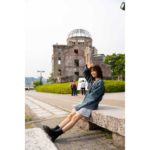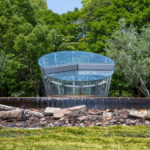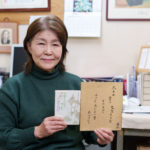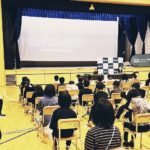7 Medical Care and Support for A-bomb Survivors
Medical facilities and healthcare professionals in Hiroshima City also suffered devastating damage and casualties from the atomic bombing. All medical facilities in urban areas, excepting those made of reinforced concrete, were destroyed. A total of 2,168 (91%) out of the 2,370 healthcare professionals in Hiroshima City were exposed to the atomic bombing.
Physicians were prohibited from evacuation at that time, in preparation for relief activities in the event of an air raid. There were 298 physicians still in Hiroshima City at the time of the bombing. Of these physicians, 90% were affected and there were only 28 physicians who were uninjured. Dentists, pharmacists, and nurses also suffered as well. The healthcare professionals who were to be in charge of providing treatment for the injured and sick suffered catastrophic damages.
In critical condition, without regard for their own injuries, the healthcare professionals who narrowly escaped death treated people in bombed medical facilities and relief stations hurriedly set up in schools, temples, bridges, roads, and parks. Rescue teams came to help, not only from within the prefecture but also from the neighboring prefectures such as Okayama, Yamaguchi, and Shimane, and all the way from Osaka, Hyogo and other prefectures. There was support from abroad as well. Dr. Marcel Junod, the new head of the International Committee of the Red Cross’ delegation in Japan, arrived in Japan on August 9, 1945. He immediately negotiated with the GHQ for support, after he was informed of the appalling conditions in Hiroshima, and on September 8 he came to Hiroshima himself, bringing along approximately 15 tons of pharmaceuticals and medical equipment provided by the US army. Dr. Junod stayed in Hiroshima for four days and was involved in the relief activities.
In the late 1940s, immediately after the bombing, before medical care for A-bomb survivors was carried out systematically, physicians in Hiroshima were already working to provide medical care for A-bomb survivors and to conduct research on their health conditions, and making gradual progress. Their steadfast efforts later brought free medical treatments to A-bomb survivors. On March 1, 1954, the Daigo Fukuryu Maru (Lucky Dragon No. 5), a Japanese fishing boat, encountered the nuclear fallout (“ashes of death”) from a hydrogen bomb test conducted by the United States at Bikini Atoll, and crew members in the boat were exposed to radiation. After the Bikini Atoll Incident, action to petition the national government to support A-bomb survivors began. This action spurred the formation of a law providing medical benefits to A-bomb survivors. It was a major step forward for the health and medical care, and for the welfare of A-bomb survivors.
By the end of the World War II, Hiroshima Prefecture had few public hospitals, and there were no medical institutions of higher education, or their affiliated hospitals. Instead, it was home to a number of military hospitals. After the war, military hospitals and the Japan Medical Treatment Corporation hospitals were diverted to national and prefectural hospitals. This helped increase the number of public hospitals in Hiroshima Prefecture to 74 by the early 1950s. In 1952, Social Insurance Hiroshima Citizens Hospital opened in Hiroshima city. Facilities for health and medical care gradually improved, primarily through public hospitals such as the Hiroshima University Hospital. In 1956, the Hiroshima Atomic-bomb Hospital which was specialized in treatment of A-bomb survivors opened on the premises of the Hiroshima Red Cross Hospital. In 1961, the Hiroshima Atomic Bomb Survivors Welfare Center opened as a healthcare and livelihood support facility for survivors.
Development of Hiroshima’s medical sector is a monument to the hard work and impassioned efforts of Hiroshima’s physicians, who were driven by their own feelings of guilty about the fact that they had been unable to do anything for people struggling with pain. The knowledge and expertise of those physicians who faced hardships as pioneers of the search for effective treatments for A-bomb survivors, have been passed down and has contributed to the medical care of radiation victims around the world.
Inquiries about this page
Hiroshima Prefectural Office
Street address:10-52, Motomachi, Naka-ku, Hiroshima-shi, Hiroshima-ken, 730-8511
Tel:+81-(0)82-228-2111








